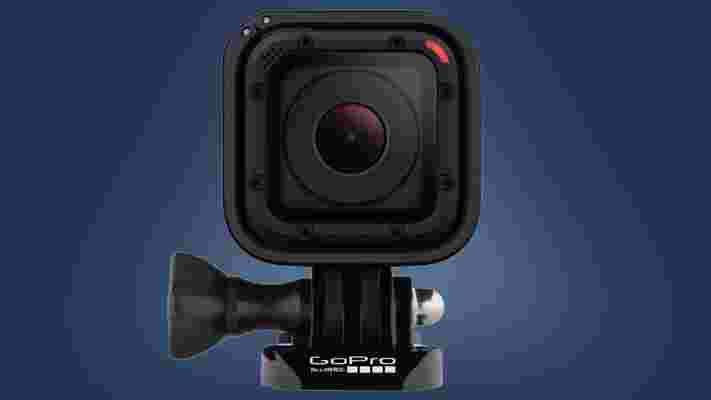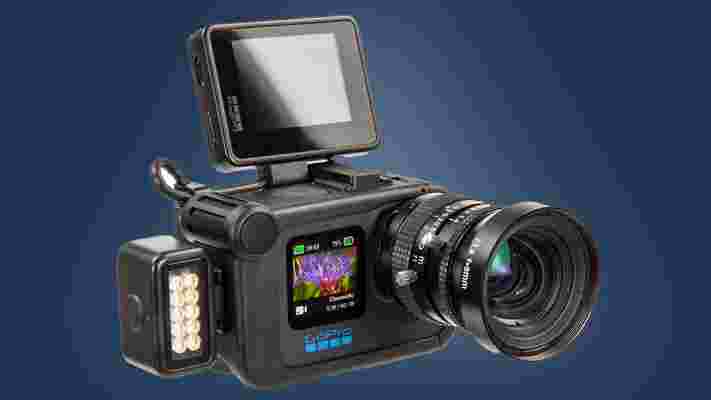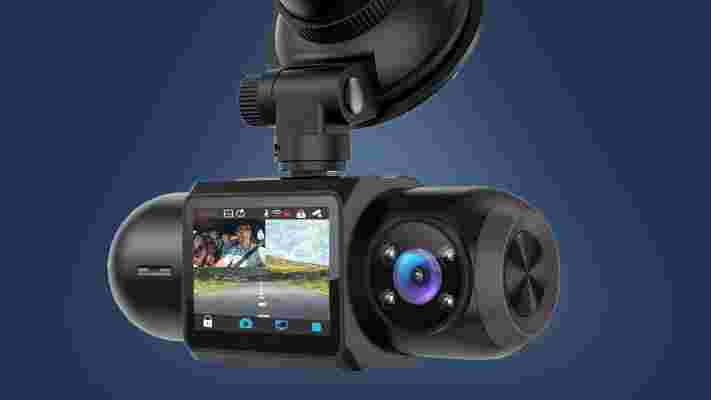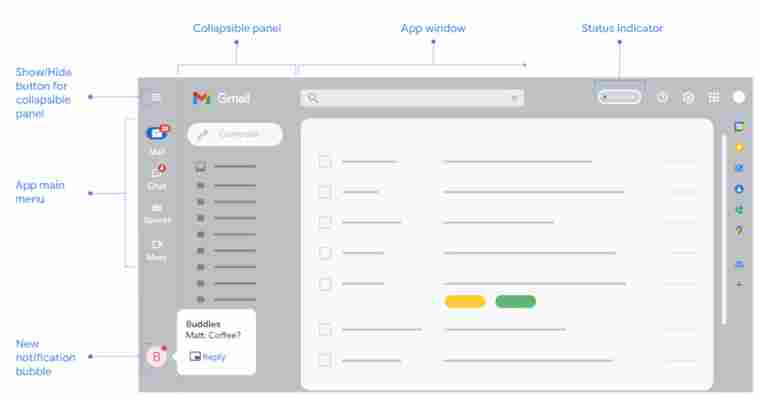February isn't traditionally a big time for GoPro news, but this year's been an exception thanks to the action-cam king's recent earnings call. Unusually, GoPro made some big predictions about its plans for the year ahead – including a pledge to branch out into new "types" of action camera .
In a revealing earnings call, transcribed by financial website The Motley Fool , GoPro CEO Nick Woodman said that "at the end of 2022, we plan to increase our hardware offering from the two product types we have today, Hero and Max, to four distinct camera products". That won't be the end of the growth either, with Woodman adding that "we expect to expand that further by the end of 2023".
So which new GoPro cameras can we expect to see? Naturally, the company didn't reveal any specific details, but it did drop a few vague hints. Woodman contrasted GoPro's new approach with its previous one, which it called "good, better, best". The latter led to the creation of three variations on the same concept – the Hero 7 Black , Hero 7 Silver and Hero 7 White – which offered different price points but appealed to the same kind of user.
This year will be very different, it seems. Woodman explained in the earnings call that "we think it’s important to build very differentiated specialized solutions for different use cases to appeal to entirely new groups of users". This would help GoPro avoid the current Hero problem: Potential customers looking at the one-size-fits-all action cam find it's "more than they need, or not enough of what they need”.
As Woodman explained. GoPro already makes "a Swiss Army knife" that can be adapted for extreme sports, vlogging or scuba diving. But that versatility also means its Hero cameras come with "a lack of specialization that some tip-of-spear customers really need or desire". Alternatively "for other users, it doesn't do enough".
These honest assessments, and GoPro's conclusion that it "needs a broadened product offering, a broader portfolio, more tools for more people", have sparked lots of speculation about what it could have up its wingsuit sleeves for this year. So we've rounded up the most likely contenders for those "four distinct camera products", and added our thoughts on how likely they are.
(Note: All of the model names below are purely speculative and placeholders for products we think could materialize, based on GoPro's comments during its recent earnings call).
GoPro Hero 10 Session

When GoPro talks about new form factors, it's hard not to immediately think about a revival of its Hero Session from 2015. The little cube-shaped camera came with the tagline 'GoPro Performance, Simplified' and was designed to fit into nooks and crannies that standard GoPros couldn't squeeze into.
But we're not convinced this is the kind of camera GoPro has in mind when it talks about "specialized knives" to complement its Swiss Army knife flagship. First, the Hero Session range – which was discontinued in 2018 – was still aimed at the same non-specialist audience as the standard Hero series. Also, as our GoPro Hero 5 Session review remarked, it was "fiddly to use" with a "poor battery life".
Still, it's possible that GoPro might be able to overcome those issues and make a more premium DJI Action 2 rival. If so, we reckon it'd be tailored to a more specific use case, though, most likely FPV drone fliers, rather than the average action cam fan.
GoPro Cinema

A pro-level GoPro seems the most likely candidate for one of the four product categories that the action maker talked about in its earnings call. CEO Nick Woodman said "we're going after developing premium solutions" and that "I think it sometimes gets missed that GoPros are used by professionals the world over, whether it's for film, television, their own commercial purposes, their own research purposes".
Indeed, Ridley Scott used GoPros to make The Martian , with the director stating that the cameras “became a character in the movie; they were mounted on the astronauts; Matt’s character actually records all of his video logs on them in the habitat." But despite these occasional starring roles, there's no doubt that a more specialized GoPro in the vein of a Sony RX0 II would go down well with filmmakers.
That doesn't necessarily mean a 1-inch sensor, like the RX0 II, as GoPro would likely want to maintain its excellent electronic stabilization. But pro-friendly features like 10-bit video recording and time-code syncing would be, even if the GoPro Cinema (or whatever it's ultimately called) is twice as expensive as the GoPro Hero 10 Black.
GoPro Dash

On paper, GoPros seem like ideal dash cameras – they're small, have wide-angle lenses and take great stabilized video. But in practice, their limited battery lives, overheating tendencies and lack of tailored software means they can't quite compete with the best dash cams .
So could GoPro be prepping a car-friendly take on its Hero range? It's certainly possible; GoPro has talked about adding dash cam-like features to its GoPro Labs software, like adding start/stop capture when the camera detects USB power . And it would fit the CEO's observation that it needs to do things that "for years we just can't get done with a Hero camera due to certain physics constraints".
But GoPro would have some considerable ground to make up on the likes of Nextbase . And it may just be a leap too far, considering the company was previously burned by over-stretching into specialist sectors like drones that it had no heritage in.
GoPro Pilot
One of the more interesting action cam concepts we've seen lately is the Apeman Seeker R1 – it's effectively an all-in-one safety system for cyclists, including a camera for monitoring and recording the road behind. Could GoPro create something similar for your bike?
GoPro certainly has the camera tech already, but there aren't currently any accessories in its ecosystem that add a 50-lumen tail-light or an anti-collision laser bike lane, like Apeman's new creation.
This tech certainly isn't beyond GoPro's reach, but the bigger question is how big the market is for an all-in-one system like this. We reckon it's slightly too niche for a dedicated GoPro camera, but perhaps the company has spotted a portable safety solution that'd also tie in nicely with the growing e-scooter boom.
GoPro Stream
The traditional camera giants are falling over themselves to become the default choice for streamers and vloggers, a market that already numbers 50 million people (and counting) according to data analysts SignalFire . And it's certainly not impossible that one of the "professional" use cases that GoPro has in mind is Twitch and YouTube streamers.
You can already live-stream directly to the likes of Twitch with any GoPro from the Hero 7 Black onwards, while those with a GoPro Subscription can also stream directly to their audience via a private link. But GoPro's current live-streaming limitations mean there could be a gap for a dedicated device.
There's currently no way to raise the low bit-rate of GoPro cameras when you're live-streaming, and they still lack the finesse and feature set of a dedicated choice like the Elgato Facecam , which offers an excellent 1080/60p output. But there could be a gap for a premium GoPro alternative, particularly for home-streamers who want something that's just as comfortable venturing outdoors.
Analysis: GoPro prepares to spread its wings again
The rise of smartphones has forced all camera manufacturers to think outside the box of their traditional offerings, and GoPro is no different. The GoPro Hero 9 Black launch seemed like a big evolution for action cameras because its GoPro Labs software opened up new paths beyond the usual dirt trails. Now it seems GoPro is preparing to build on that newfound versatility with new forms of hardware "at the end of 2022".
While dreaming up next-gen GoPros is fun, the company doesn't have unlimited resources. It may have generated record year-end cash balances and revenues that were 30% up on 2020, according to its earnings call, but the distinct lack of action during the pandemic hasn't exactly helped its bottom line.
GoPro is also likely wary of what happened the last time it tried expanding into new territory. In the mid-2010s, it overextended itself with launches like the GoPro Karma drone, a costly decision that ultimately led it towards the more focused path that's produced today's streamlined product range: just the Hero and Max action cams.
Still, while it's unrealistic to expect GoPro to suddenly return to its boom days in the 2010s, there are new possibilities for its little, stabilized cameras. We reckon the most likely scenario for those "four distinct camera products" is the addition of a new premium, professional GoPro and a streaming-focused camera, to join the Hero and Max. But we're looking forward to seeing what it comes up with later this year.
Pokémon Go Johto Tour and beyond: what's Ninatic plan for events in 2022
The Covid-19 pandemic and the measures governments enacted in order to slow its spread brought huge changes to our lives in 2020 and 2021. Work moved from the office to our homes and social interaction online became the only way to see friends and family.
Businesses were hit hard too as they grappled with how to handle their customer’s new habits, and for some companies, the pandemic led them to shutter their doors for good.
It wouldn’t have been a surprise if Niantic had followed this unfortunate trend - with its game Pokémon Go specifically designed to encourage users to gather together and wander the outside world. Yet, thanks to changes to how Pokémon Go operates, particularly with regards to its live events, Niantic managed to turn 2020 into its most financially successful year ever, and its 2021 performance is expected to be strong as well.
But as restrictions are relaxed what can we expect from its upcoming Pokémon Go Johto Tour and the rest of its 2022 lineup; will we see a drop in the number of digital events or are in-person meet-ups a thing of the past?
During the Liverpool Safari Zone last year, TechRadar had the chance to talk to Philip Mars (Pokémon Go’s Product Marketing Lead for the EMEA region) and Michael Steranka (Pokémon Go’s Director of Global Product Marketing) to ask them just that. Here’s what they told us.
Pokémon is best played live
From the start of the interview, the pair made it clear that Niantic plans to keep on hosting events that require in-person attendees to show up at a specific location in the real world. And not out of devotion to Niantic's original vision for its games, but because players have shown time and again that they want to explore different areas of the world.
To give an idea of the popularity of their events, Steranka said around 60% of live event attendees are willing to come from “outside of the market” to take part. In other words, they’re willing to travel for hours by car, train, and plane in order to catch the event’s ‘mons and meet up with fellow fans.
In pre-Covid times Steranka explained that these events average an in-person attendance of around 20,000 people per day - across the Friday, Saturday, and Sunday that they run.
Liverpool didn’t see quite this many attendees during its Covid-era Safari Zone, but over 10,000 ticketed players jumped into the game while in the city’s Sefton Park area over that weekend - with a further 10,000 general players logging into the game in the wider Liverpool city area.
Of those ticketed players, 89% weren’t from Liverpool.
Additionally, of the further 20,000 people who had bought tickets in 2020 to come to Liverpool in-person (but then chose to take part digitally in 2021) only 50% of them were from the UK.

For Mars, the draw isn’t just the event’s special Pokémon spawns - for the Liverpool Safari Zone the typically New Zealand-exclusive fish Relicanth was able to be found and caught - but to explore the real-world area.
As he puts it, “You’re not just playing Pokémon Go, you’re playing Pokémon Go in Liverpool at an event - and we want to get that experience across by melding the real and digital world together.”
In practical terms, this means creating an event that feels special to the location. For example, Liverpool’s Docks which formerly held world heritage status were the inspiration for the Safari Zone’s water Pokémon theme. While it was canceled due to Covid, a City Explorer pass was also designed to encourage players to explore Liverpool’s streets and discover what it has to offer.
More generally at these events, Niantic sets up real-world stations across the event’s area that is represented in-game as PokeStops or Gyms. These stations provide free wifi, areas to sit and grab a bite to eat, or recharge your phone.
By highlighting these spots, players are encouraged to congregate here and play together by battling, taking on a raid, or trading - you’ll even find event staff handing out signs so you can easily show the crowds what Pokémon you’re looking for.
Mars explained, “Seeing friends walking together with huge smiles on their faces, or watching Trainers form new friendships and connections is the most positive confirmation that these [in-person] events are worth hosting.”
That said, those of you who have enjoyed digital access to events from afar shouldn’t be worried that will be going away any time soon.
It's time for Pokémon Go's digivolution
Early on in the Covid-19 pandemic, Niantic realized that its model for Pokémon Go wasn’t going to work as restrictions tightened.
“In March of 2020, as this pandemic really started to show signs that it was going to impact the entire world and be longer lasting than first thought,” said Michael Steranka, “we knew we had to make some really quick pivots as a team and adjust how players engage with the game.”

As players saw at the time, this meant that your buddy Pokémon would deliver items and a new challenge to you every day, that in-game points of interest could be interacted with from further away and remote raid passes were introduced so that players could interact from afar.
Steranka went on to say, “At the time, when these measures were introduced, we saw them as a temporary thing - they’d eventually go away so that we could go back to what made Pokémon Go feel like this special experience of outdoor exploration.
“But, what we’ve come to learn is that there are ways to continue to incorporate these elements as more permanent fixtures that don’t take away from our vision," Sterenka explains. "You know, the pandemic has really changed how people live their lives. We have to make sure we’re engaging our users in a way that best suits them and adapt our game as the world changes.”
As part of that adaptation, Steranka suggested that Niantic will continue to explore digital events saying, “we've heard players loud and clear, we definitely think that those global experiences are here to stay.”
What that means is players can expect to see similar events to 2021’s Global Pokémon Go Fest and the Kanto Tour. Case in point, Niantic is hosting a Johto Tour offering global gameplay options.
But as the world reopens we can expect to see these events become more hybrid, so that Niantic can offer its players the “best of both worlds”.
Once again turning to the Johto Tour, Niantic has announced that certain European cities will be hosting in-person celebrations including Warsaw, Linz, London, and Bristol to name just a few.
As Philip Mars explained “We really believe that having an in-person live experience is what makes [our events] special.
“Players can stay at home and enjoy a similar gaming experience, but we want players from all over the world to be able to come together because we love seeing that and we know players love that too.”
So while Pokémon Go's digital events won't be going away soon, you can expect to see a slew of in-person and hybrid events kicking off in the coming years. We echo Ninatic's sentiments that you should only attend in person if you're comfortable, but if you're on the fence we'd highly recommend you go along.
It's as awesome an experience as they say.
The new-look Gmail has landed - here's all you need to know
Google has given users their first proper view of the new-look Gmail as the company looks to bring a host of its top products into one place.
The company recently revealed that Gmail was set for a major makeover that would provide users with a one-stop shop for all their communication needs - whether via email , video conferencing , or instant messaging - without them having to open up extra tabs or windows.
The rollout of the new Gmail appears to have already begun, with the company saying that users with personal Google accounts and those on Rapid Release domains are able to access it now.
Gmail update
This new-look Gmail brings the likes of Google Chat, Spaces and Meet into a new, integrated view, the company revealed in a guide on its Gmail Help blog.
As well as this integrated view, the new Gmail will allow users to view specific app menus in a collapsible panel, and get alerts for new Chat and Space messages through notification bubbles.

Going forward, all Google apps in Gmail will be situated in a single menu on the left of the screen. Users can switch between them by clicking on an app's menu, or point to an icon to see a preview, with the new collapsible panel able to be hidden or displayed with a click at any time.
Google also notes that individual and group chat messages can be accessed from the Chat tab, including opening into a small pop-up window at the bottom of your screen.
Finally, notifications will now appear on the bottom left corner as a bubble whenever you get a new chat or space message, with a preview displaying when you point at the bubble. Clicking on the bubble will allow users to open the message and reply directly from the chat or spaces tab, or open up a small pop-up window for a more concrete view.
Or if you'd rather just forget this method of communicating, notification bubbles can be turned off with a few clicks.
Google says it is now preparing a wider rollout over the next few weeks, with Scheduled Release domains next to begin receiving the new look on February 28.
Once launched, users will be able to enable the new view by navigating to Settings > Quick Settings > Try out the new Gmail view , then in the new window, clicking Reload.